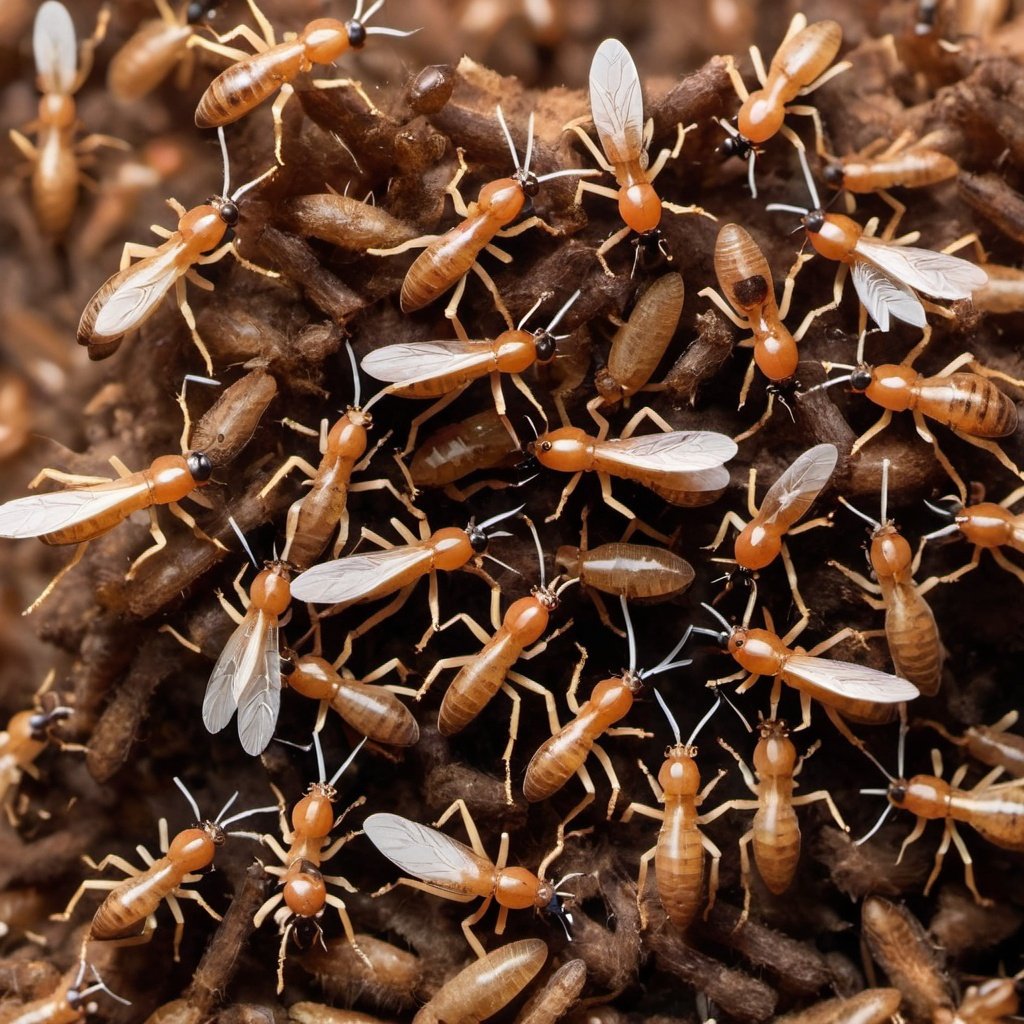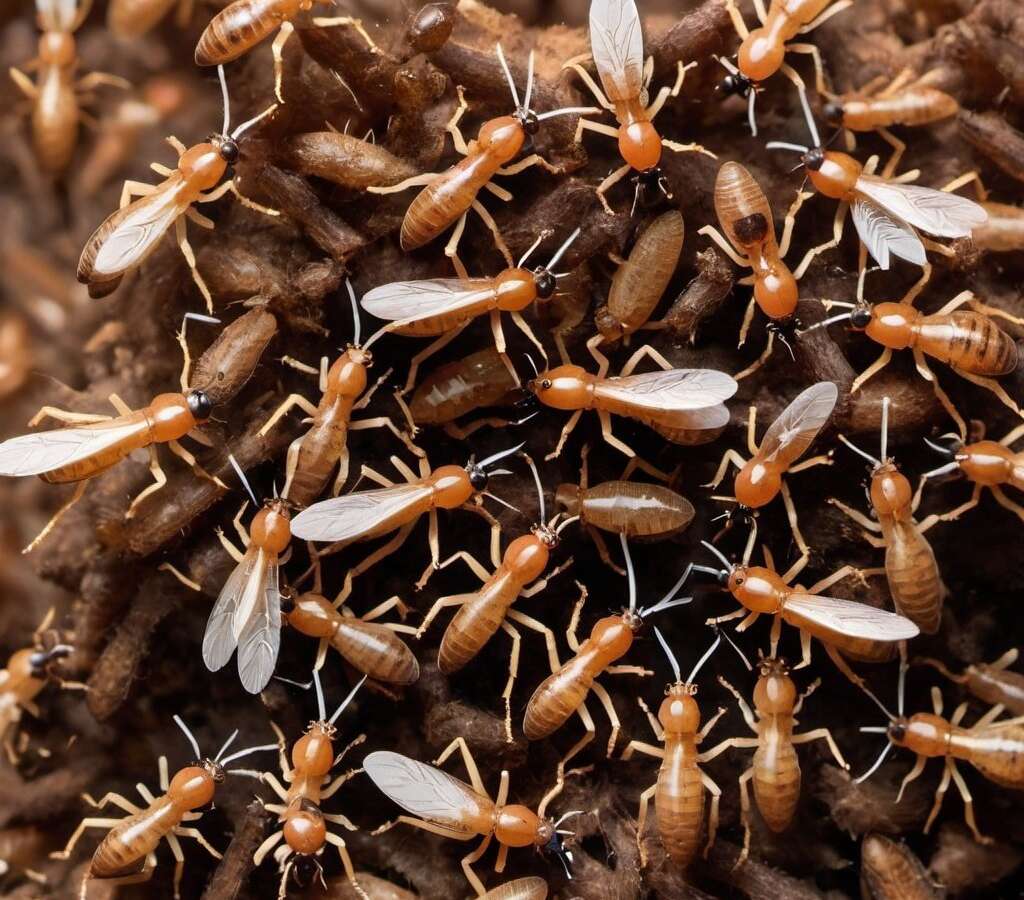Insects are amazing creatures. They have learned to feed on all sorts of different things. From decaying plant and animal material, to the heavily processed foods of today, insects will find a way. One of the most interesting insects diets is that of the termite. These insects have found a way to create energy from consuming wood. But do termites eat treated wood? Termites may eat treated wood once it ages to the point where the treatment starts to wear off, an untreated edge, or if there is no other wood to be eaten.
Treated wood is specifically chemically treated to withstand the attack of insects such as termites. The wood is put into a pressure chamber and the air is pulled out of the wood. Then the wood is treated with a chemical bath with such materials as chromium, copper, and arsenic. The pressure that pulls the air out then pushes these chemicals in, so that the wood is deeply permeated with them.
WHAT DOES A TERMITE EAT?
Most people believe that termites eat wood. This is not entirely correct. They actually eat cellulose. Cellulose is found in wood, but also found in other materials such as paper, insulation, carpet and fabric. They have protozoa and bacteria in their gut that will break down the cellulose into useable food.
The workers will feed on the wood that they find, store it in their gut and then return to the colony. Here, these workers feed the larvae, soldiers and reproductives via a process called trophallaxis. Trophallaxis is the process of feeding another termite by regurgitating the cellulose in their gut into the mouth of the other termite. The young nymphs must molt, or shed their skin as they grow. When they do this, they lose part of their hind gut with the molted skin. This results in a need to replenish their stomach protozoa. They do this by feeding from the anus of the worker ant. Sound disgusting, but it is necessary for survival. An Oklahoma exterminator can help if you are having issues with termites.
TERMITE LIFECYCLE
Termites go through incomplete metamorphosis. This means that they are hatched from eggs as nymphs. Nymphs are smaller versions of the adult. They will go through the process of molting multiple times in order to grow to adulthood. In adulthood, there are three castes that they will play a role in. They will either be a worker, soldier or reproductive.
The worker is tasked with tube building, feeding the young and foraging and transporting food. The soldiers are tasked with protecting the colony. The reproductives, or alates, are there to reproduce and build a new colony. These are the only ones with wings. Male and female reproductives will leave the colony in late spring to swarm with reproductives of other colonies. They will pair up and find a good place to start a new colony. At this point they lose their wings and burrow underground. The queen immediately starts laying eggs, and the king tends to the first generation. Once they are grown, they will take over the process of taking care of the young, and the process starts all over again.
WOOD PREFERENCES
Termites can be somewhat picky eaters. Some woods have compounds in them that termites dislike or are not good for them. For instance, termites love pine. This of course it problematic because most of our building wood is some form of pine. Teak, on the other hand, is something that they will eat, but it also kills a large number of them.
In order to find out what woods termites prefer, the U.S. Department of Agriculture did a study, giving formosan termites samples of each wood that was tested. They did the test for six weeks and found that the redwood, Brazilian jatoba, Peruvian walnut, Honduran mahogany, Alaska yellow cedar, and teak all showed signs of resistance by the termites. Southern pine and spruce were their favorites. Peruvian walnut was interesting in that it caused a high mortality rate in the termites, but they ate it just as much as spruce or pine.
PREDATORS
Termites do have predators. And plenty of them. Anteaters and aardvarks will gladly make a meal out of a termite colony. Genets and civets, animals from the cat family, have been known to eat termites. If a mole or a shrew happens upon a termite colony, it will eat well that night. Mongoose and bats will also eat them. When the swarmers come out, birds will make a meal out of alates. Even humans will eat them. In some parts of Africa, termites are considered a delicacy.
But of all their predators, the most voracious are ants. Termites are much larger than ants, but ants will outnumber the termites by insurmountable numbers. When ants find a mud tube built by termites, the ants will invade. This is when the termite soldiers come to life. They have large heads with powerful mandibles. They will move down the tube and meet the ants. Worker termites will close off the tube behind the soldier, sealing his fate. Their large heads plug up the hole, and they will kill some ants, but eventually, the soldier will be overrun and killed. Hopefully by this time, the termites have sealed off the mud tube.
HOW DO I KNOW IF I HAVE TERMITES?
The number one way of discovering if you have a termite problem is if you find mud tubes coming up the side of your home. Termites in Oklahoma are subterranean termites. This means that they need to be in high moisture areas such as underground. By building mud tubes, they can stay in the humid underground air while still foraging above ground. If you see mud tubes, you need to call a Tulsa pest control company.
Termites will also cut holes in the wood to the outside in order to eject frass. Frass is essentially termite trash. It can be dead termites, old skin from molts, dung or just dirt from digging. If you see a large number of frass holes in a piece of wood, it is likely that you have termites. It’s time to call an Oklahoma pest control company.
HOW DO I GET RID OF TERMITES?
There are no effective ways of ridding your home of termites that can be purchased over the counter. You will need to call your Tulsa exterminator and schedule an appointment. Here at TermMax Pest Control, we can inspect your home for free. We’re here to help!




